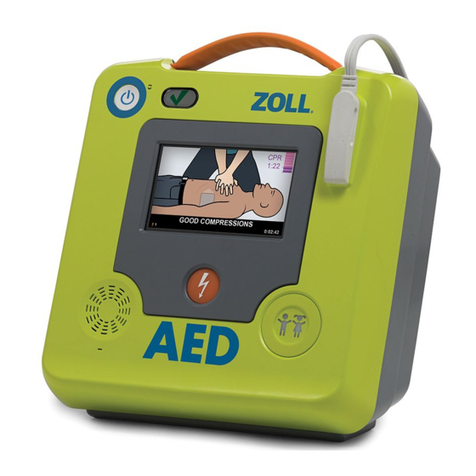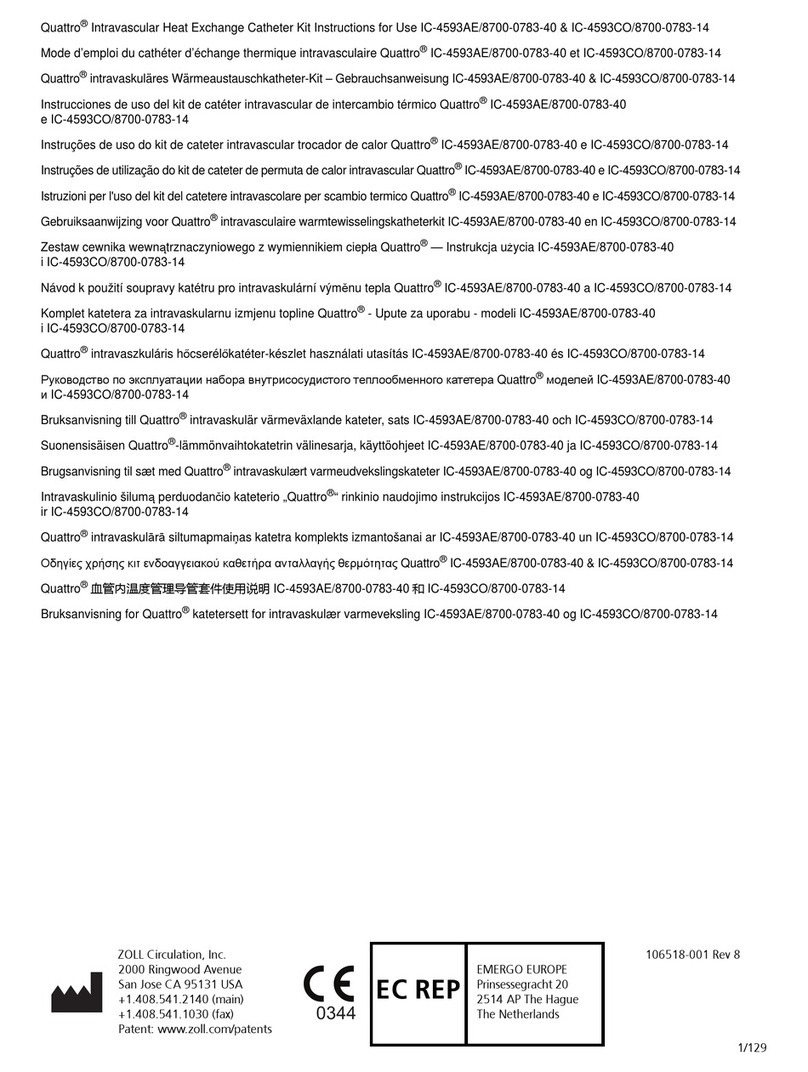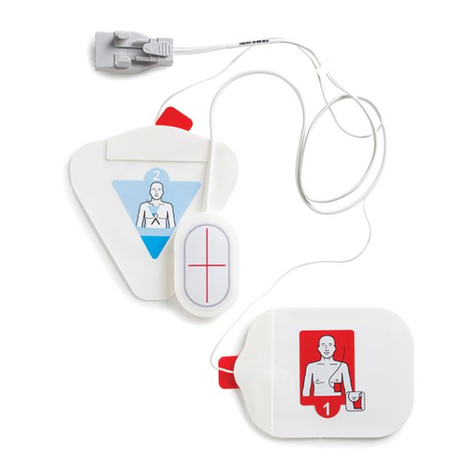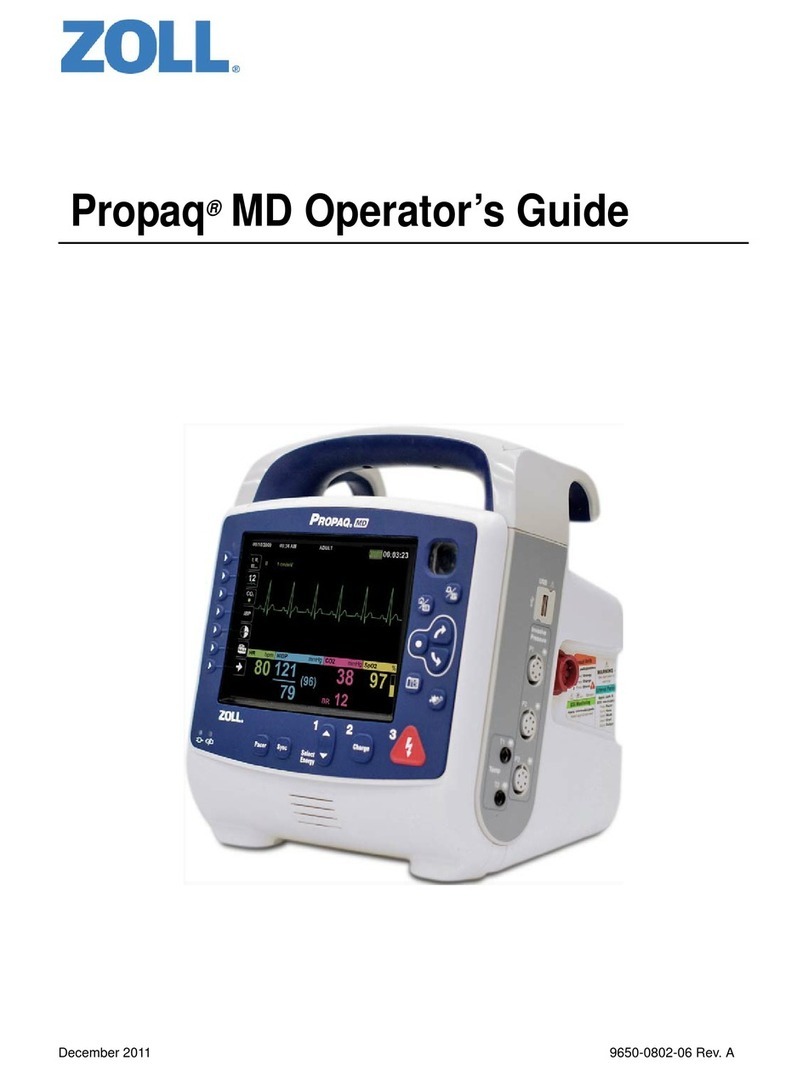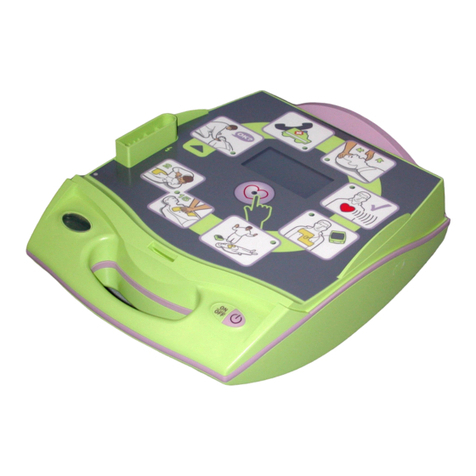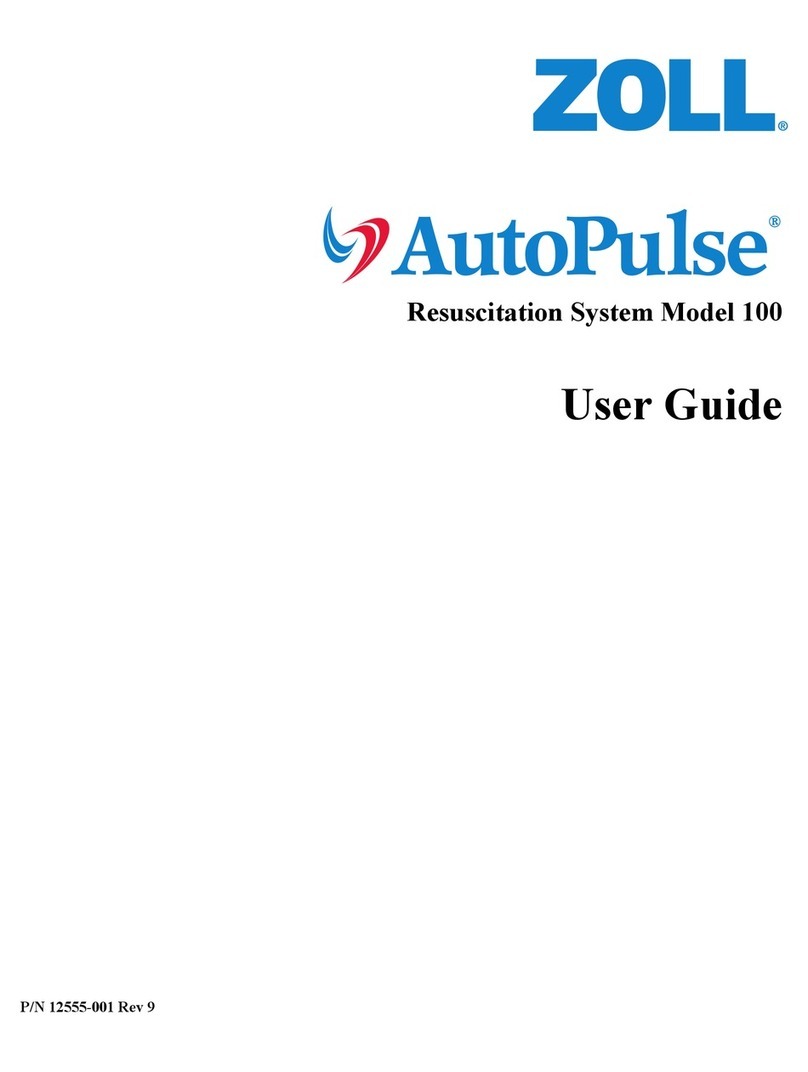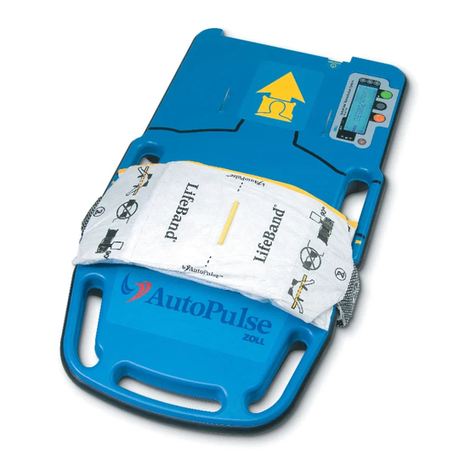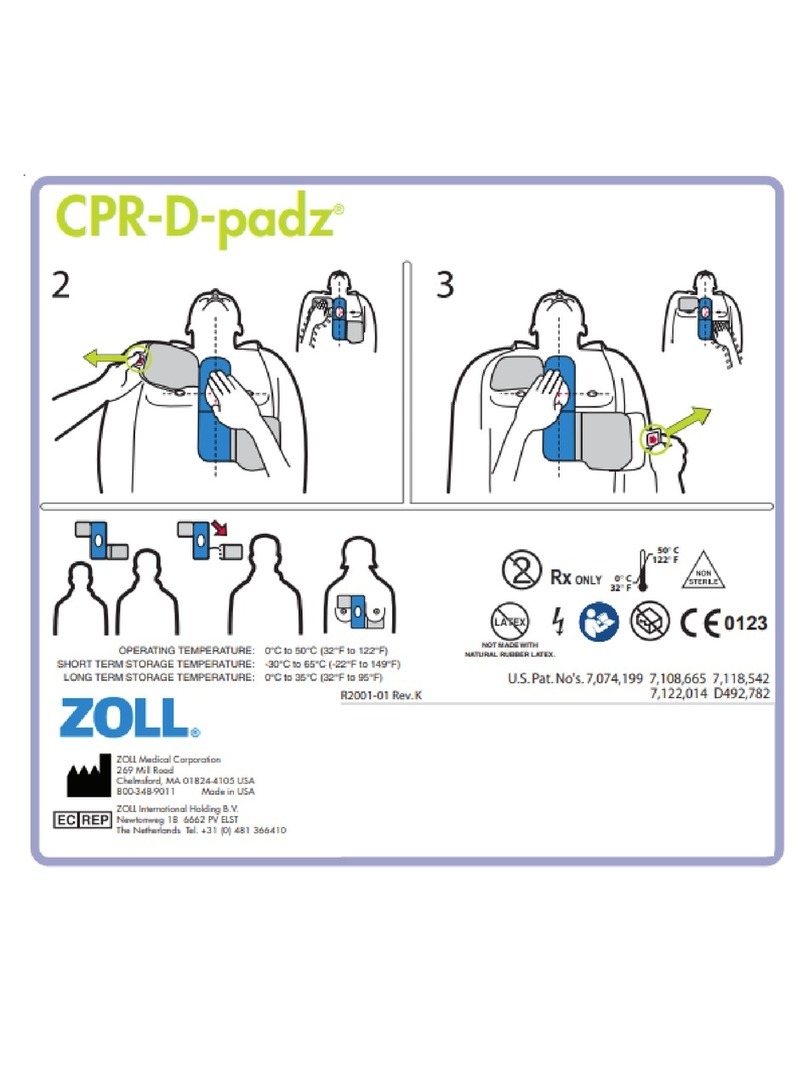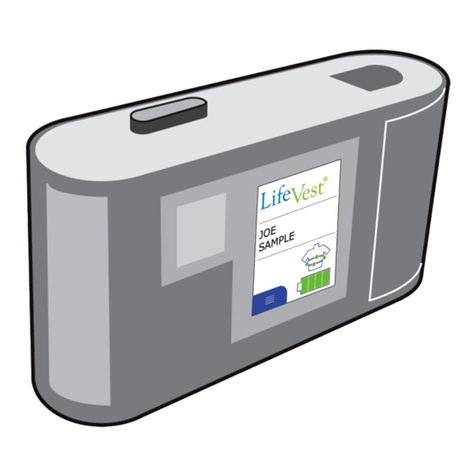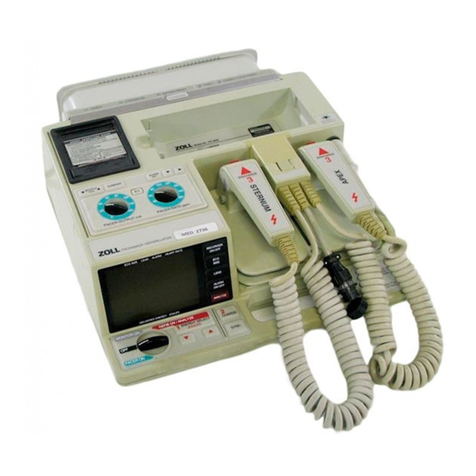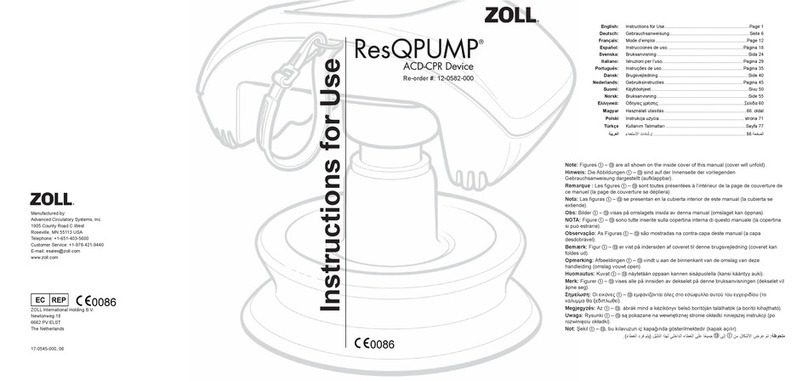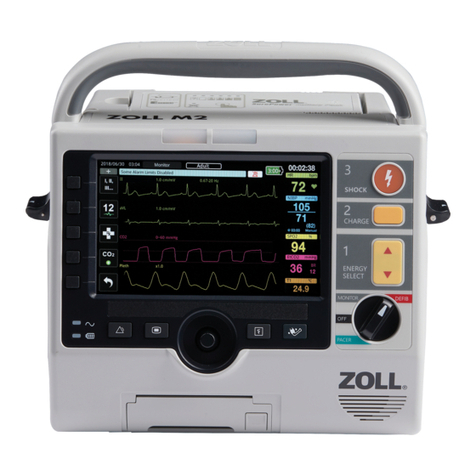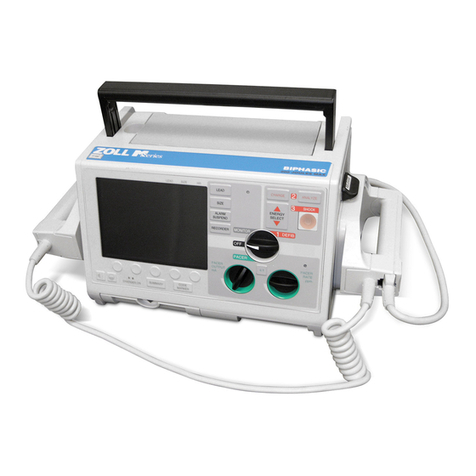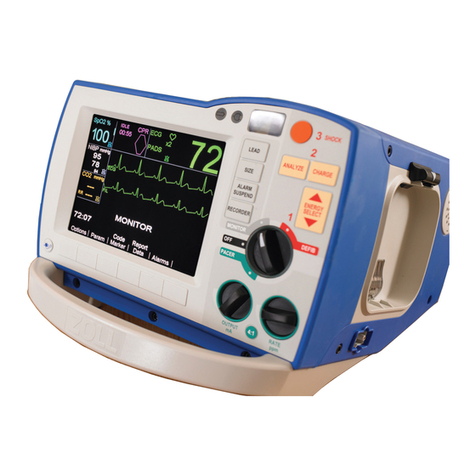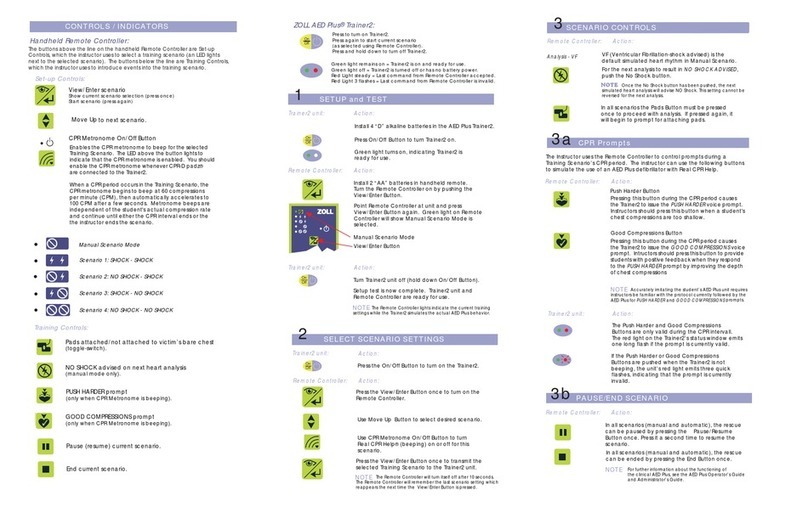
9650-1210-01 Rev. T 1-1
SECTION 1
GENERAL INFORMATION
NOTE: Your E Series®may or may not contain all the features listed in this manual, depending on your particular
configuration.
Product Description
The ZOLL®E Series products combine defibrillation, ECG display, advanced monitoring capabilities, and Noninvasive
Transcutaneous Pacing (NTP) with communication, data printing and recording capabilities in a single lightweight
portable instrument. The unit has been designed for all resuscitation situations; its small, compact, lightweight design
makes it ideal for accompanying patients during transport. The product is powered by alternating current (AC) or direct
current (DC) mains and an easily replaced battery pack that is quickly recharged in the device when it is connected to
AC or DC mains. In addition, the unit’s batteries may be recharged and tested using ZOLL Base Power Charger™ 4X4
or ZOLL SurePower™ Charger systems designed for standard interchangeable ZOLL battery packs.
The product is designed for use in both the hospital and the rugged EMS environment. All of its features add to its
durability in hospital applications. The device is a versatile automated external defibrillator with manual capabilities and
may be configured to operate in Manual, Advisory or Semiautomatic modes. Semiautomatic versions of the device
have a distinctive front panel with a single ON position. Conventional devices, which can be configured for Manual,
Advisory or Semiautomatic operation, have a standardized ZOLL operator interface. When operating in manual
configuration, the device operates as a conventional defibrillator where the device’s charging and discharging is fully
controlled by the operator. In Advisory and Semiautomatic modes, some features of the device are automated and a
sophisticated detection algorithm is used to identify ventricular fibrillation and determine the appropriateness of
defibrillator shock delivery. Units may be configured to automatically charge, analyze, recharge, and prompt the
operator to “PRESS SHOCK”, depending on local protocols. The unit is switched from Semiautomatic mode to Manual
mode for ACLS use by pressing the appropriate soft key on the front panel.
The E Series assists caregivers during cardiopulmonary resuscitation (CPR) by evaluating the rate and depth of chest
compressions and providing feedback to the rescuer. Real CPR Help®requires the use of CPR-D-padz®and the
CPRD-to-MFC connector. Real CPR Help is available in E Series units with software version 3.00.000 or higher.
Information regarding the unit’s operation, patient ECG, and other physiological waveforms is displayed on a large 5.63
inch diagonal display, which provides high contrast and visibility under virtually all lighting conditions. Operating and
warning messages are displayed on the monitor and the unit can also be configured with voice prompts to alert the
user to unit status. Self-diagnostic tests are performed when the instrument is turned on as well as periodically during
operation.
A sophisticated data collection system, an internal summary report feature with printer, and PCMCIA cards are
available for this unit. A PCMCIA card can be installed in the unit to record ECG and virtually all device data when the
device is turned on. The data stored on the PCMCIA card can be reviewed and archived on a properly equipped
personal computer using RescueNet®Code Review for Windows software.
An annotating strip chart recorder is included to provide immediate documentation and summary report functions about
patient care and treatment during use.
Some E Series products are intended for use in the Semiautomatic mode by first responders and emergency medical
technicians certified by an appropriate federal, state or local government authority. Some E Series products are
intended for use in Manual mode by personnel certified by appropriate federal, state or local authority to provide
advanced life support care.
Some E Series products are intended for use in the pre-hospital emergency medical care setting, indoors and
outdoors, including first response vehicles, fire vehicles, basic and advanced level ambulances as well as by both
Basic Life Support (BLS) and Advanced Cardiac Life Support (ACLS) staff in hospitals under protocol control.
